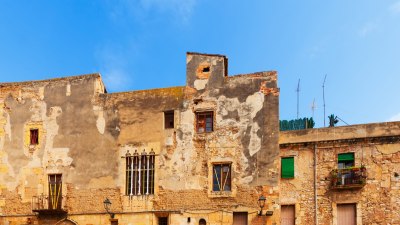Why Every Street in an Old City Has a Hidden Story to Tell
Explore the untold tales and rich history found in every old city street.

Old cities are treasures of history, wrapped in the stories of their streets. Each pathway, alleyway, and square has a unique narrative shaped by the passage of time. The blend of architecture, legends, and the lives of the people who walked those streets weaves a rich tapestry that offers insight into the culture of the past. In this article, we will delve into why every street in an old city has a hidden story waiting to be uncovered.
The Layers of History
An old city is like a book with many chapters, each street contributing to the overarching narrative. Historical events, from battles to significant political movements, have left their marks on the streets. Buildings bear the scars of time, showcasing architectural styles of different eras while whispering tales of the lives once lived within them.
As urban landscapes evolve, layers upon layers of history accumulate. A street that once served as a trade route may transform into a bustling shopping district, yet remnants of its past still linger in the architecture and layout. Exploring these streets allows one to piece together a narrative that transcends generations.
Architecture as a Storyteller
The architecture of an old city is more than just visual appeal; it is a reflection of the socio-cultural dynamics of its time. Gothic cathedrals, baroque palaces, and quaint cottages tell tales of the people who built and inhabited them. Each architectural style represents a specific period, providing clues about the technological advancements, materials used, and aesthetics appreciated by previous inhabitants.
For instance, narrow alleyways may indicate an era of dense urban living, while grand open squares reveal a focus on community gatherings. The contrast between different architectural styles within the same street often reflects historical influences, migration patterns, and socio-economic shifts within the city.
Legends and Folklore
Alongside the tangible elements of history, streets in old cities are often steeped in folklore and legends. Stories of legendary figures, mythical creatures, and haunting tales populate the streetscape. Locals pass down these narratives, imbuing the physical space with cultural significance. Folklore acts as a bridge between the past and the present, allowing modern inhabitants to connect with their surroundings on a deeper level.
The existence of place names can also hint at deeper narratives. Streets named after historical figures, events, or even significant local flora and fauna celebrate a community’s heritage. Thus, a casual stroll could reveal a wealth of knowledge, as each name may evoke stories of heroism, tragedy, or cultural pride.
The People’s Stories
Ultimately, the streets are a canvas painted by the lives of countless individuals. Each resident, visitor, and passerby contributes to the ongoing story of the street. Oral histories from locals provide insight into day-to-day life, struggles, and celebrations that may not be documented in official records.
Interviews with long-time residents can yield rich stories of a neighborhood’s evolution. Local businesses often have their own narratives, revealing how the economy and culture have shifted over the years. These personal anecdotes are invaluable for understanding the nuanced fabric of the community, and they offer a perspective that transcends historical texts.
The Role of Urban Exploration
Urban exploration plays a critical role in uncovering the hidden stories of old city streets. This practice focuses on appreciating and examining the remnants of the past that may go unnoticed in the hustle and bustle of modern life. Explorers often document their findings through photography or writing, contributing to the collective understanding of the city’s heritage.
Walking tours can also act as a conduit for storytelling. Guided by knowledgeable locals, participants gain insight into historical events, architectural wonders, and folklore associated with specific streets. These tours not only preserve the history but also instill a sense of pride and connection among participants.
Preservation of History
As cities evolve and develop, the risk of losing historical narratives increases. Therefore, preserving old streets and their stories is imperative. Preservationists advocate for protecting architectural integrity and maintaining the character of old neighborhoods. This effort is not merely about conserving buildings; it is about safeguarding the stories they embody.
Communities often engage in initiatives to record their histories, whether through written documentation, oral history projects, or the installation of story plaques along streets. These methods ensure that the tales of yesteryear endure, allowing future generations to appreciate the depth of their cities.
The Global Perspective
The phenomenon of streets in old cities telling stories is not unique to one location. Across the globe, every old city showcases a multitude of stories waiting to be discovered. Countries with rich histories often have entire districts dedicated to preserving the past.
In Europe, cities like Rome and Paris are famed for their historical streets, each telling the story of empires, revolutions, and cultural movements. Meanwhile, in Asia, cities like Kyoto showcase traditional architecture preserved for centuries. Similarly, cities in the Americas that bear the imprint of colonial histories tell stories of coexistence, conflict, and cultural fusion.
Connection to Modern Life
The stories embedded in the streets of old cities remain relevant in contemporary society. They inform identity, influence urban planning, and inspire new generations to appreciate their heritage. Modern development can coexist with historical preservation, allowing cities to evolve while honoring their past.
In addition, these stories play a vital role in tourism. Travelers are increasingly seeking authentic experiences that connect them to history and local culture. Recognizing the importance of old city streets can foster a greater appreciation for heritage tourism, boosting local economies and encouraging communities to take pride in their historical landscapes.
In conclusion, every street in an old city carries narratives waiting to be discovered. The layers of history, architectural styles, legends, and personal stories all contribute to a rich tapestry that visitors and locals alike can appreciate. As we navigate these streets, we become a part of the ongoing story, ensuring that the tales of the past live on in our collective memory and future experiences.











